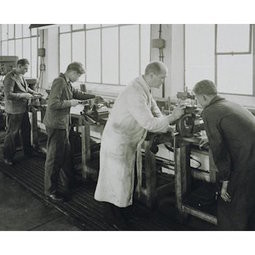
Published on 07/31/2016 | Market Sizing
The Industrial Internet of Things (IIoT) is becoming a topic of interest among manufacturers, solution providers, and industry press. According to an Accenture report (“IIoT: Unleashing the Potential of Connected Products and Services”, January 2015), the opportunities for IIoT include:
- Long-term revenue growth
- Operational efficiency
- Connected ecosystems
- Collaboration between humans and machines
To me, there is one glaring omission from the ongoing discussions. It seems the predominant focus is on what the technology can do to benefit the business, but there should also be some thought given to how the technology will benefit the people doing the work. Fundamentally, technology is about enhancing the lives of humans by extending their capabilities and relieving their burdens; making more money should be a byproduct of enabling people to be more effective.
If you’ve been in manufacturing for any length of time, you have no doubt seen this happen: a new IT solution gets implemented with promises of improved productivity, but it ends up creating additional tasks for the person doing the actual work. For example, a maintenance system which improves breakdown analysis and preventive maintenance capabilities requires technicians to find a near-by keyboard and monitor, log into the system, navigate a menu of potential causes, understand how to locate production assets and repair materials, keep track of work orders, and also type out the results of their investigations. The technology has not enhanced their lives or extended their capability to get things done, it has just become an additional hurdle to being successful in their work.
IIoT has got to be about more than “smarter sensors” and “M2M communication”; the guiding principle in my IIoT wish list is that technology should be truly utilized for making the lives of workers better and extending their capabilities; this should become the primary focus of the new breed of industrial devices. The other benefits will flow naturally when people view the technology as real tools that help them do their job, rather than “stuff you gotta do to make the supervisor happy”.
1. The time has come to get rid of keyboards on the plant floor. Devices should provide information directly to systems without the need for human interaction. Most of the information an operator or mechanic needs to input via keyboard comes from a source that can provide the same information through some digital means: for example, production and scrap counts can be provided directly from the machine controller, as can downtime symptoms.
2. Make information available where the worker is instead of making the worker go to where the information is available. This goes for HMIs, dashboards, SPC charts, work orders, MRO access, or any other reason they currently go to a fixed location to obtain the information.
3. Devices should understand the context of the information they provide. If, for example, a scale is taking a weight, it should “know” which sample it is weighing, what batch it belongs to, and what the acceptable weight limits are for the sample. This requires systems be able to “talk” to the devices.
4. There should be devices that can augment reality to assist people in doing their work; a mechanic, for example, should have access to an exploded view of a machine sub-section and instructional videos while he/she is repairing that component.
5. Finally, smart devices must obey Asimov’s Laws of Robotics. I’m sure organizations like OSHA and IEEE would probably want a say in the matter as well.
I doubt this list is all-inclusive, so I’ll call it my preliminary list for now. I’m hoping others will contribute to my list; please feel free to share your own thoughts. What do you think IIoT should do?